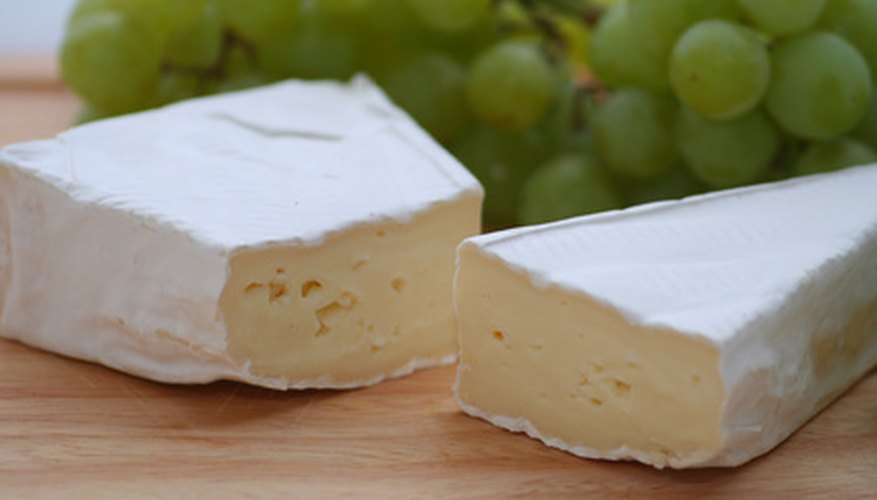Brie is a soft young cheese, usually made from cow's milk. Brie rind is edible and complements the creamy cheese inside. Those who don't mind the flavour of the rind eat it along with the soft cheese. Rich in flavour, Brie is best when served at room temperature on hot, fresh French bread.
Types of Brie
Brie de Meux and Brie de Melun are the two "true" types of Brie. These are made only in the Seine-et-Marne region of France (the Brie region). There are many other types of Brie, made in France and in many other areas of the world. Brie de Meux, Brie de Melun, and many other Brie cheeses are made from cow's milk, but several Brie cheeses are made from goat's milk. Some people (especially the French) enjoy Brie Noir, a Brie that has been aged nearly a year. Their Brie rinds are black, and the taste and smell are pungent, unlike regular Brie.
- Brie de Meux and Brie de Melun are the two "true" types of Brie.
- Brie de Meux, Brie de Melun, and many other Brie cheeses are made from cow's milk, but several Brie cheeses are made from goat's milk.
Features of Brie
Brie is a pale yellow, creamy cheese with a white rind. For best flavour, it is best to buy it uncut--Brie comes in round wheels. Supermarkets usually sell Brie whole or cut into small triangles. Some shops sell Brie, minus the rind, in plastic containers. Most Brie connoisseurs will tell you that this is not the ideal way to enjoy the cheese.
The white Brie rind is mould formed from penicillium candidum or penicillium camemberti. The mould is harmless unless you are very allergic to mould. A brie's rind should feel firm and silky, not hard and crusty. It has an earthy taste and can be eaten alone or mixed on the bread with the cheese. Some people dislike the distinct earthy taste of the rind and prefer to eat only the creamy centre of the cheese. Brie, as it ages, develops a stronger musty, earthy taste and aroma.
Brie bought or sold in the United States--including imported Brie--is made with pasteurised milk and does not have quite the same taste as Brie made the traditional way in France. In general, Brie found in the U.S. has a milder flavour.
- Brie is a pale yellow, creamy cheese with a white rind.
- Brie bought or sold in the United States--including imported Brie--is made with pasteurised milk and does not have quite the same taste as Brie made the traditional way in France.
Function of Brie Rind
The rind protects Brie from the air and delays drying and loss of flavour. If you remove the rind, you should eat the creamy centre within a day or so.
Time Frame for Making Brie
Making Brie from start to finish takes at least a month (much of that time is the ageing). Cheese makers sometimes allow Brie to mature for another month or two.
Geography
True Brie comes from France, namely the norther, Seine-et-Marne region, where the cheese originated. However, cheese makers in many other countries, including Canada, Switzerland, the United States and Australia, make Brie.
